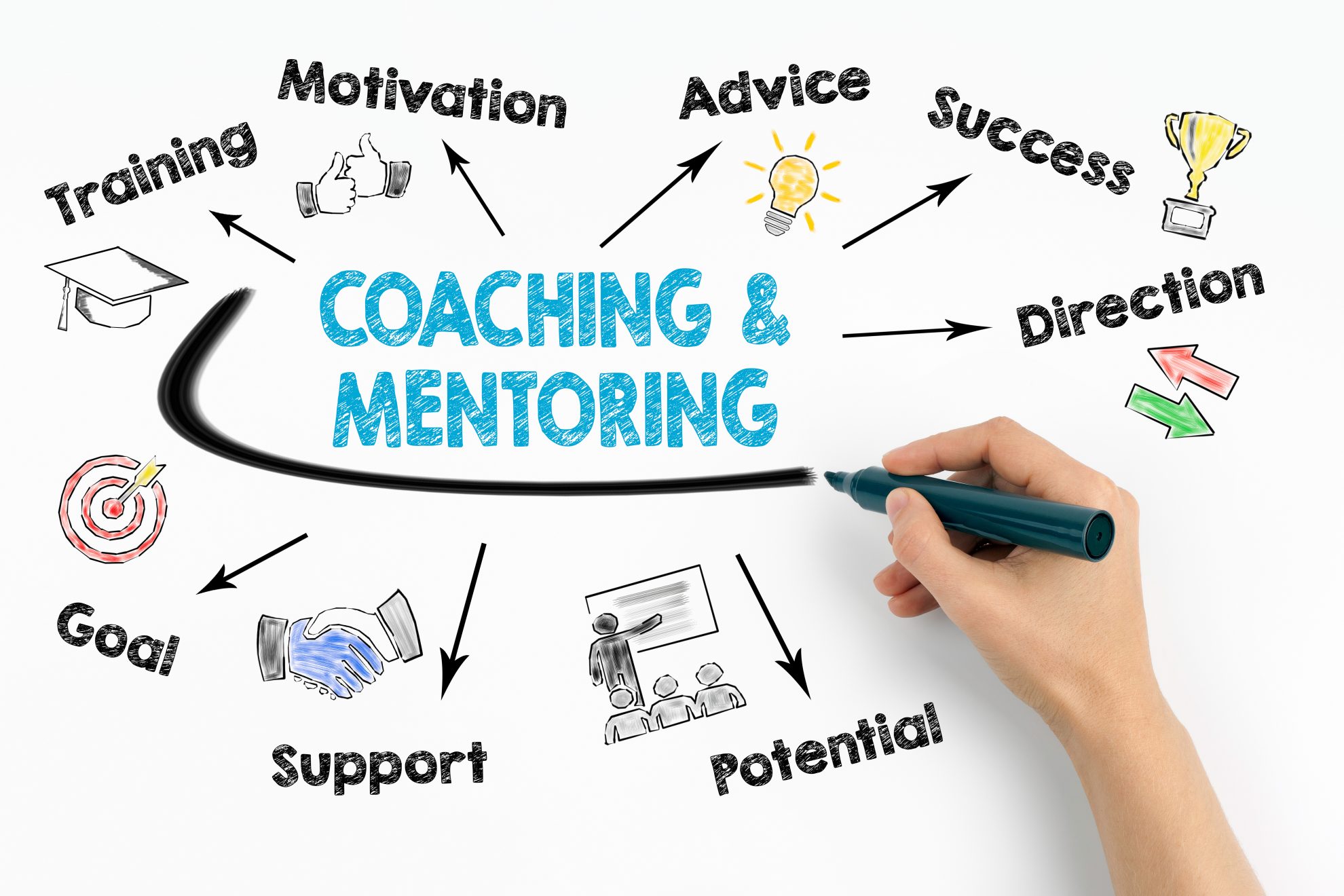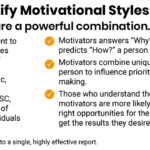Training and coaching are two closely related learning strategies that help develop personal skills. Knowing the difference between coaching and training can help you decide which will develop your professional and personal expertise.
While training transfers knowledge and skills, coaching transfers enthusiasm and learning from training to the workplace in a more transformational way. Another significant difference between training and coaching is that coaches focus on helping employees identify personal solutions rather than providing solutions from the outside.
We will discuss 6 differences between training and coaching so that you can help to maintain your business or increase your demand in your organization or office.
Differences in Process between Coaching and Training
Training and Coaching are two approaches to personal and professional development that have been around for decades. While they have a lot of similarities, there are also six key differences between the two methods.
Coaching:
1. More Focused Process for Learning and Development:
Saves you time, focused on specific areas for improvement, and the structure is custsomized for the individual. Coaching can be used to shift thinking, transform leadership, provide focus, structure, and accountability. People take an active role in their own learning journey by directing their own inquiry.
It enables them to identify what is important to them and their areas of strength and weakness. They can develop new skills and strategies to reach their goals and create action plans for sustainable change. The coach can help learners gain greater ownership over their learning and better understand how it applies.
2. More Open-Ended Inquiry and Learning Based on Questions:
Through open-ended inquiry-based learning, coaching encourages learners to ask questions, reflect on their experiences, and explore different perspectives.
By understanding how different topics relate to one another (or don’t) within a given context or situation, learners can develop a deeper understanding through discussion. Rather than following traditional linear teaching methods, learners can explore concepts holistically through this approach.
3. Focuses on Behavioral Change or Performance:
Coaching is particularly effective when focusing on behavioral change or performance improvement. Because it emphasizes problem-solving skills and self-reflection.
Coaches help clients identify limiting beliefs or underlying motivations that may prevent them from achieving desired outcomes. Mentors help clients explore solutions by focusing on strengths rather than weaknesses.
They also create space for clients to explore alternative approaches that may lead to improved results or increased self-awareness/understanding. A coach would provide the right level of exploration without judgment or criticism from an external party. This type of approach can also lead to creative thinking.
4. Coachee-Centric Model
The coachee-centric model of coaching puts the person being coached at the center of their own learning journey. The coach is there as a facilitator and guide throughout this process.
Rather than merely offering advice or instruction, as is commonly seen in educational settings, coaches foster meaningful relationships with their clients. During meetings, they actively listen and seek out new information to gain a better understanding of the client’s goals and how best to guide them.
They offer guidance while still leaving room for independent exploration. The coach’s role is to listen closely and pose thought-provoking inquiries that can enable a comprehensive transformation of each topic. These dialogues should then contribute to strategies for achieving meaningful behavior change.
5. Measurement Through Goal Achievement Progressions
Measurement during a coaching program is important for gauging progress against stated goals or objectives. However, it doesn’t need just quantitative measurements such as tests or surveys. But allows for qualitative measures like behavior observations over time or progress made against specific milestones within the program itself.
To ensure success by meeting intended outcomes throughout the course of the program, goals should be realistic yet achievable.
6. Experience Based Setting with Active Participation by Participants
Coaching is best experienced within an experiential setting, one where there’s active participation from all participants involved (coach/client). Plus, any other stakeholders who may influence change within you or your organization, such as colleagues or family members.
People can gain valuable feedback from leaders, peers, and mentors and direct reports through the combination of coaching methods and tools.
This feedback can provide direction for their learning journey, allowing them to achieve desired outcomes much faster than solely relying on a conventional short term training setting.
Training:
1. Usually Structured:
Training is a structured program typically involving multiple steps and objectives designed to provide learners with the knowledge necessary to perform a specific job, task, or role.
It often consists of courses, lectures, activities, simulations, role-playing exercises, and other learning experiences designed to help learners acquire new knowledge and skills.
The objective of the training is to ensure that participants have the appropriate understanding and can correctly apply the new information in their professional or daily life.
2. Content is Prescriptive:
Content prescribed in training focuses on explicitly teaching the desired knowledge or skill set at hand. This includes providing applicable examples to illustrate how these concepts or skills may be applied in real-world scenarios.
Through this instruction, learners can internalize the material more effectively than learning through observation alone. Training sessions often allow participants to practice with different scenarios they might encounter at work to promote critical thinking.
3. Generally Focuses on Technical Skills:
Training programs generally focus on developing task management and technical skills related to a certain industry or profession, such as project management or customer service.
Let’s read an example. Customer service representatives may receive training on handling difficult customer conversations and learning about their organization’s products and services. Organizations can also benefit from technical skills training by staying updated on emerging technologies and best practices.
Leadership and interpersonal skills are narrowly defined and focused on material rather than on the learner’s skills, mindset, individual talents or barriers.
4. Instructor-Centric Model:
The instructor-centric model used for training emphasizes an interactive approach where an individual instructor provides materials such as slideshows, videos, demonstrations, and activities for students throughout each course session.
In a traditional classroom setting, an instructor is typically in direct contact with the learners or students. This interaction between the instructor and the learners helps them to both comprehend and retain the information being presented.
Instructors can use fun, interactive activities like group discussions and quizzes to help students understand and remember new information related to their jobs. Through these activities, instructors can engage students in meaningful conversations and ask questions that lead to a deeper understanding of the material.
5. Result Based Measurement:
Training that is result-based means that the goal of the training is to measure the results from the learning process. This could mean evaluating what was learned during the training process and see if it had an impact on employee performance or job outcomes.
Result based training typically involve setting clear objectives, measuring progress toward goals, and providing feedback on how well those objectives were met. So ensure that participants understand the objectives before starting any type of training program.
6. Classroom Style Setting with Passive Learning Outcomes:
In a classroom setting, passive learning outcomes are achieved when learners are able to acquire knowledge without actively engaging in activities. In a classroom with passive learning, a teacher may provide students with information about a certain topic.
The teacher will then explain this topic further and ask questions so that the students can gain an understanding of the material. To help solidify their knowledge, students may be given exercises to complete to reinforce the ideas they have heard in the lecture.
Additionally, teachers may use visual aids such as slideshows and videos to supplement their lectures to make them more exciting and engaging for learners.
Classroom style settings can also involve hands-on activities such as role-playing or simulations for students to gain practical experience with the concepts being taught. Group discussions allow learners to express their opinions and engage with others about the lecture material.
4 Major Tips to Improve Coaching and Mentoring Practices
Coaching and mentoring are powerful tools for leaders to develop their team members and improve overall business performance. Leaders must follow these tips to improve their coaching and mentoring practice.
1. Coaching with Curiosity:
Improving coaching and mentoring practices requires that participants be curious and ask open-ended questions to understand their needs better. When exploring challenging topics, find a balance between pushing the participant to think deeply.
Questions should help move the conversation forward but not be intrusive or disrespectful of boundaries. It also helps to invite feedback before delivering solutions and perspectives that could benefit the participant.
2. Focus on Problem-Solving:
When working with clients, it is essential to focus on problem-solving rather than simply offering advice and opinions. Coaches should help participants identify what challenges are causing them difficulty in pinpointing areas where improvement can occur.
They should allow participants some time to brainstorm potential solutions and come up with ideas on their own. Coaches can then guide participants in breaking down their chosen solutions into actionable steps and setting realistic goals for success.
3. Coaching with Goals in Mind:
Creating achievable goals provides the coach and the person being coached with direction when working together. Every coaching session should begin with clear objectives so everyone knows what they’re trying to accomplish during each session and over time.
Setting achievable objectives also gives individuals something tangible they can strive towards It helps them stay motivated throughout the process whilst providing more structure when measuring success in later sessions.
4. Lead with Empathy:
Showing empathy will create a safe space for effective dialogue between coaches and participants. It demonstrates understanding which can encourage trust between both parties involved in the process.
Building rapport with those being coached or mentored is essential for successful outcomes. So coaches must empathize with their clients’ experiences without personal judgments about them or their situations.
Why is Coaching More Effective Than Training?
Coaching is an effective technique for helping individuals reach their goals, whether professionally or personally. Here are six reasons why coaching is more effective than training.
Coaching Tailors the Training:
Since coaching tailors the training, it offers greater flexibility and customization. It allows individuals to focus on their specific needs and goals. Individual coaching can identify areas for improvement and provide personalized strategies tailored to the individual’s strengths and weaknesses.
Offers a Higher Level of Accountability:
Coaching also provides greater accountability because they work one-on-one with the client or team member. With this intimate relationship comes a greater sense of responsibility and commitment, which helps hold everyone accountable for their actions and performance.
Through consistent support from the coach and positive reinforcement, clients can develop the necessary skills to succeed without feeling judged or criticized.
More Effective than Traditional Training Methods:
In contrast to traditional training methods, coaching develops skills and confidence rather than simply imparting knowledge. Through active participation in goal-setting activities, and problem-solving tasks, students become more self-assured and capable of taking the lead.
For Increased Self-Confidence:
Coaching increases self-confidence, as it fosters an atmosphere of trust and understanding. This type of environment allows for a deeper exploration of one’s own strengths, weaknesses, and goals.
Coaches provide personalized feedback based on the individual’s needs and capacity for growth rather than providing a one-size-fits-all approach. Through this process, individuals can develop new habits.
The participants create plans to overcome obstacles preventing them from reaching their potential. Coaching also encourages individuals to take ownership of their development and make decisions that will help them improve their self-confidence.
For Increased Productivity:
Training is less effective in increasing productivity than coaching because it does not consider the individual’s specific goals and objectives. With the help of a professional coach, the individual can maximize their efficiency while avoiding burnout or overwork.
The coach will also help the person stay focused on their priorities to achieve their desired outcomes. Additionally, coaching provides an atmosphere to practice accountability with real-time feedback until results are achieved.
For Higher Job Satisfaction:
Coaching boosts job satisfaction better than training because it helps people understand why they do what they do in a workplace setting. Individuals can boost their satisfaction at work by understanding why certain behaviors result in positive or negative job performance.
A coach will also identify strengths and areas of improvement that the individual and their organization can benefit from. By addressing worries or anxieties in a manner specific to each individual’s needs, coaching leads to an increase in job satisfaction.
All these elements combine to make coaching a far more impactful way for employees or teams to improve their performance than traditional training methods.
When Should You Not Use Coaching?
Although coaching is a valuable method to improve their skills, there are times when coaching is inappropriate or may not be the most effective solution.
When Coaching Goals Are Unclear:
Coaching should not be used if the goals of the individual or team are unclear. It would be ineffective to coach someone to improve customer interaction without knowing what outcome is desired.
When a person or team does not have clear, measurable goals, it can become difficult to assess progress. Therefore, it is essential to ensure that any coaching program is tailor-made to meet predetermined objectives.
When Time is Unmanageable:
In some cases, coaching may take longer than expected and be too time-consuming for both the coach and the client. If the goal cannot be accomplished within a reasonable timeframe, then coaching may not be the best approach to use.
In these cases, other approaches, such as group training sessions or online courses, may be more effective as they can save time while still providing value.
When They Lack Expertise:
If a project requires specialized knowledge that neither you nor your client possesses, then coaching may not be beneficial at this stage. No one will be able to understand the subject matter adequately. In this case, it would be better to hire an expert who can provide focused instruction on the specific topic.
What Are the 4 Types of Coaching in the Workplace?
Coaching in the workplace is a powerful tool for managers and HR professionals that can help companies foster meaningful change and growth. It has been used in various settings, from executive coaching to team coaching and integrated coaching.
Here we will explore the four coaching methods in the workplace, as well as their benefits, to help you decide which is best for your organization.
1. Executive Coaching
Executive coaching is a type of professional development that helps strengthen leaders’ performance within a company. It typically kicks off with assessments of an individual’s strengths and weaknesses. Using the coach’s guidance, an appropriate development plan can be created.
Executive coaches teach them new ways of thinking and acting to influence others more effectively to achieve significant business results. It helps their clients address specific business and interpersonal challenges that arise in their role, by
2. Integrated Coaching
Integrated coaching is an approach that embeds coaching sessions into other areas of training, such as management development or corporate wellness programs. Through this method, participants can reinforce lessons they have learned during the training.
In addition, integrating coaching into training programs helps ensure that leadership development learnings “stick.” It enables organizations to better measure return on investment when it comes to professional development efforts
3. Team Coaching
Team coaching is a form of professional development that focuses on developing team dynamics, collaboration, performance, and communication within the workplace. It is effective for teams at all levels from C-suite to front-line staff.
Through team coaching, team members learn how to foster healthy interactions with each other and collaborate on tasks more effectively. A coach typically creates an agenda for a meeting that outlines goals for the session.
It creates tasks for members of the team to complete individually or together. To gain insight into potential issues or areas of improvement, the team may also observe normal work activities.
4. Virtual Coaching
Virtual coaching is an effective form of training that utilizes technology such as online video conferencing or web-based applications. It provides employees with remote support and development opportunities.
This training has increased accessibility by removing physical barriers between coaches and participants. It is also cost-effective since it eliminates expenses associated with travel.
Furthermore, virtual coaching can improve employee engagement by allowing participants to connect with their peers regardless of location. Participants can interact in real-time in chatrooms and discussion boards, enhancing collaboration.
Identify the Need You Have for Training or Coaching
Now you can identify the difference between training and coaching completely. Training can be beneficial when you need to learn a new skill or improve upon existing skills. Coaching can be useful if you want to develop a new strategy, stay motivated, and unlock growth potential.
Ultimately, the decision about whether to pursue training or coaching should be based on your individual goals and objectives. After assessing personal and professional needs, we have concluded that we should invest in coaching.
Coaching will allow me to become better informed about the topics necessary for further development in my chosen field, as well as hone my current set of skills.
Personalized guidance from a coach or mentor would ensure to stay focused and motivated throughout the process. It helps us reach our goals more quickly and efficiently.





